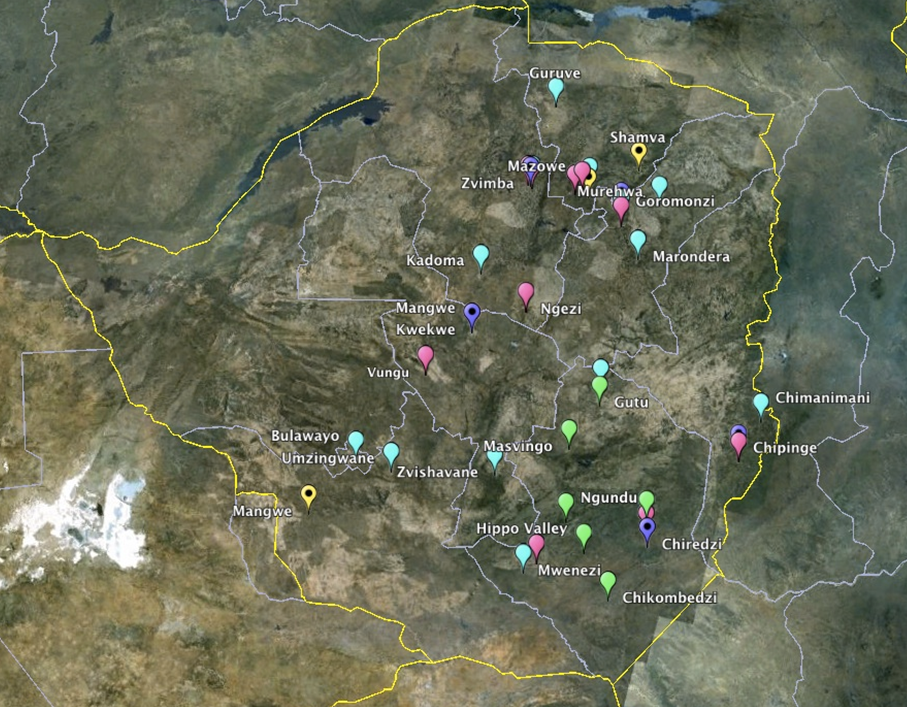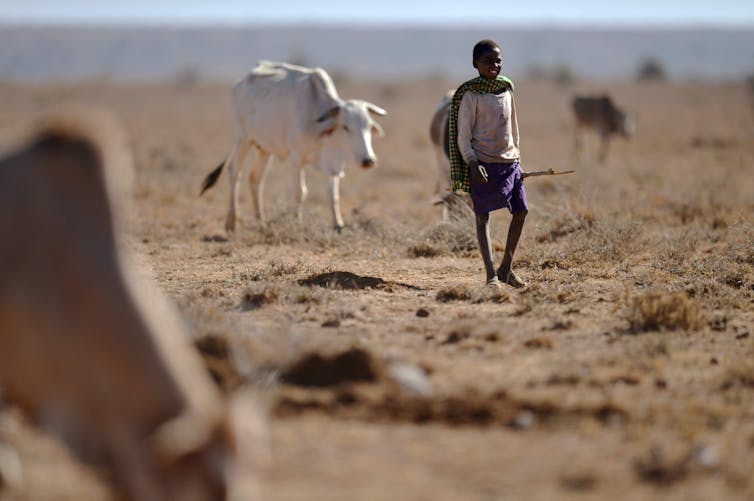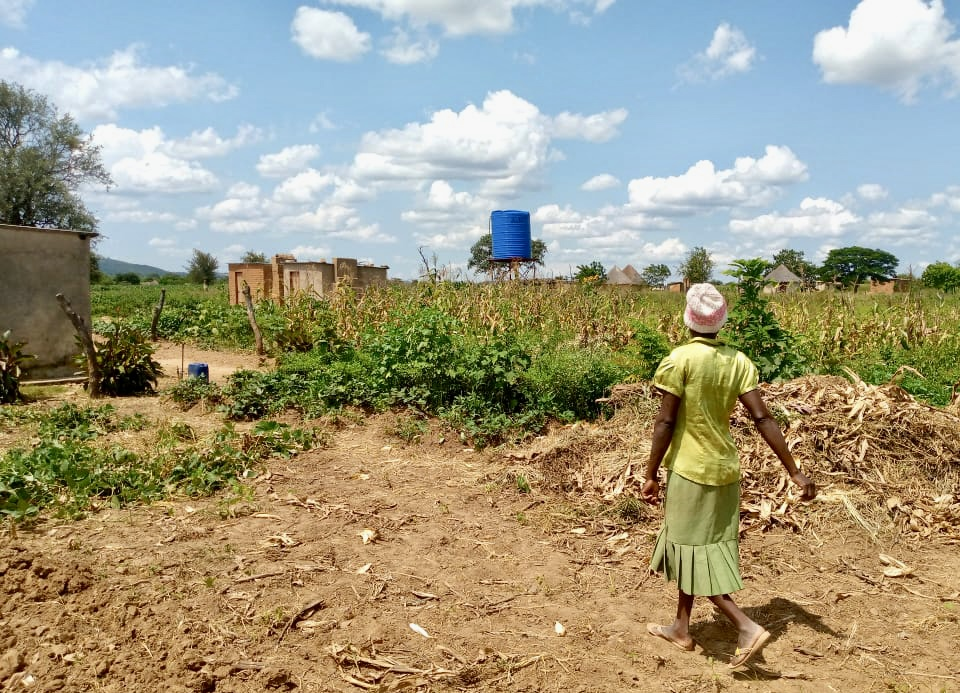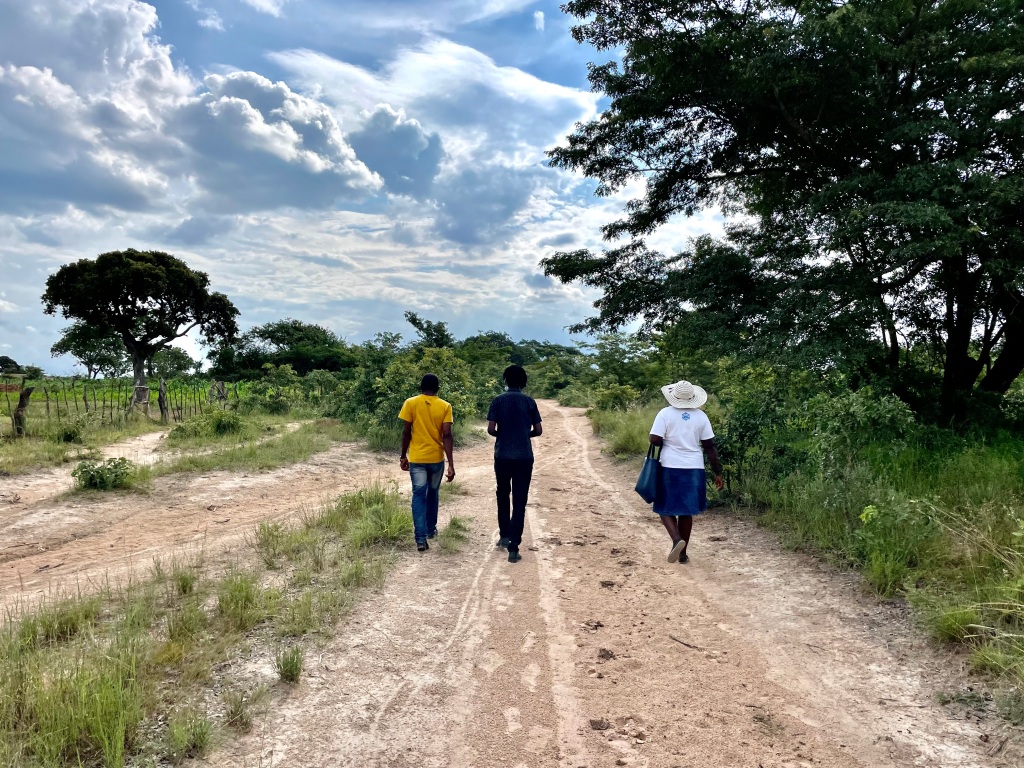
In 2010 we published the book, Zimbabwe’s Land Reform: Myths and Realities. In the book, we chose 5 recurrent ‘myths’ often relayed about the post-2000 land reform, both in academic and popular commentary. We interrogated them with very detailed data based on a sample of 400 households across 16 sites in Masvingo province. All were found seriously wanting – although as with all ‘myths’, there were grains of truth, complexities and grey areas in each.
Some argued that our argument was contrived; that the myths were just ‘straw men’, easy to shoot down. We begged to differ, and pointed to the repeated articulation of such arguments. This blog was established in 2011 in order to continue the debate, as the myths persisted to colour sensible discussion, and indeed became more entrenched. In 2017 myths about land reform sadly still dominate much discourse, and policy debate (and unfortunately much ‘academic’ work) is sadly mired in ideological positions rather than grounded in field-level, evidence-based realities.
This is why we continue the research work, and I continue with the blog. Our work has now expanded to multiple sites, both in the Highveld (Mvurwi area of Mazowe district) and in Matabeleland (Matobo district), and complemented by many, many other studies (see the map above from a few years back – I am planning to update this, so please send me links to your studies, and the precise location). This other work continues to challenge the standard myths, but extends, expands and nuances the debate in important ways. Research is led by such organisations as the African Institute for Agrarian Studies and the Ruziwo Trust, and the subject of many theses from students registered across Zimbabwe’s universities and indeed the world, and adds up to a substantial corpus of evidence.
But despite the evidence, there remains much misunderstanding and misrepresentation of Zimbabwe’s land reform. I could take many examples but a section on land in what was otherwise quite a good report by a Harare-based campaign NGO, the Research and Advocacy Unit, is a good example. I choose it not because it is especially problematic (there are many much worse), but it comes from a respectable organisation, is purportedly based on research and was highlighted by the press (and in turn sent to me a dozen or more times).
Under the headline ‘Land reform crippled the economy’, The Zimbabwe Independent, reproduced an excerpt. This stated for example that “The transformations brought about by the Fast Track Land Reform Programme (FTLRP), led directly to the collapse of commercial farming and the manufacturing sector and the consequent displacement of millions of workers and a man-made humanitarian crisis.” It continued: through “violations of property rights”.. “the land invasions signaled contempt for the most fundamental basis for any investment”. The report claims that the reform distributed “multiple holdings to a small political elite, who for the most part have not used them productively. Many of these new farmers have allowed viable farms to become derelict”. In relation to land reform farmers more generally, the report argues that in 2016 “It is certainly doubtful that these farmers will produce any food surplus during the worst drought in 35 years”. It states that “millions of Zimbabweans, both rural and urban, [are] at risk of extreme hunger and even starvation” and that “informalising of the economy has resulted in deepening poverty and with Zimbabweans now existing on greatly reduced income”. You get the picture: lots of bold statements, big figures (millions) and superlatives (many/extreme/greatly) and emotive language (contempt, violating), and plenty of assumptions (such as understandings of viability, informality), yet limited data, qualifications, case material and so on. And as I say this is a mild offender, and there is much in this particular report with which I agree!
Saying that there is a more complex story, and that this sort of ‘research’ analysis does not add up, does not imply (as some continuously argue on social media, in aggressive emails to me, and in newspaper and blog comment strings) that you are necessarily a lackey of the ruling party, complicit in everything that the regime has done. No, it simply urges everyone to look at the facts, and make a rather more balanced assessment.
Four myths that distort policy debate
Seven years on what myths seem to drive and distort policy debate? Here I choose four – all have featured prominently on this blog, and because there are so many the choice was tough. In different guises all feature in the RAU report mentioned earlier, and many, many news reports, research articles, donor consultancies and other commentaries (just google, and you will see!). Some basic interrogation though suggests some new questions, and in what follows and before signing off, I identify some of the debates that I think would be more productive, and highlight some of the issues we are working on and will feature on the blog this year.
Property rights and investment. This one won’t go away, and remains central to the rhetoric of many, across the political spectrum. The argument is simple: without secure (read: private property, freehold title) tenure, land is ‘dead capital’, and so has no or little value. Without title, the argument continues, it lacks collateral value and so it is impossible to raise finance. The model of ‘success’ is the commercial farm sector pre-2000, which had freehold title, and good relationships with the banking sector. The argument is that this needs to be either returned to or replicated now, and that the ‘failure’ of land reform can be explained in these terms. You’ve all heard it – from the likes of Eddie Cross, Ben Freeth, Craig Richardson, and many others. So what’s wrong with the argument, surely secure tenure is important. Yes, absolutely! But there are many routes to tenure security, and elaborate titling is not often the best; a fact widely substantiated by research across the world, notably, perhaps surprisingly, by the World Bank. Permit and leasehold systems may be just as good, and when the institutional and governance arrangements are right, security emerges from communal tenure too, as Nobel Prize winner Elinor Ostrom and others have showed. The ‘dead capital’ argument pushed by Hernando De Soto, and adopted by many free market ideologues has been found wanting. As we have shown, there is much investment going on in some parts of the new resettlement areas, but also a lack of it in others. The variable explaining the differences is not titling or legal form of tenure, but other factors to do with a range of social, political and institutional factors. The relationship between land, collateral and finance is a complex one too. There are many ways of assuring finance institutions that lending money is a safe bet. Land titles are only one route, but there are other forms of collateral, state guarantee schemes, group lending and so on that have all worked well in other places, including in Zimbabwe. There were undoubtedly issues with the original wording of the 99 year leases in Zimbabwe, but there was also intransigence by the finance sector that preferred to lend to larger enterprises and outside agriculture when money was short. Some headway has been made on this, and we must look forward to some innovations in the financing of agriculture into the future. The old model of large-scale commercial agriculture finance is simply not replicable in a more variegated agricultural sector.
Cronyism, patronage and capture. Most land acquired through fast track land reform was under the A1 ‘smallholder’ scheme, where by far the majority of beneficiaries were formerly land and income poor communal area dwellers or those from town with no or precarious jobs. The land occupations certainly involved those with political connections, notably war veterans, but this was not universally the case. As our and other work showed, farm by farm the process was different. Generalisations that the whole land reform was subject to cronyism, patronage and political capture are simply untenable. While some admit that the beneficiaries were often relatively poor, the next argument is that they were necessarily ZANU-PF members. While resettlement areas are unquestionably ZANU-PF strongholds, and the opposition parties have found it difficult to operate there, especially around election times, the electoral picture shows something more mixed. There are many who will ‘perform ZANU-PF’ but have other allegiances, so it is difficult to assess empirically how party affiliation and control affected land access, and subsequent outcomes. Again across our study areas it is extraordinarily variable, and volatile. The A2 resettlement areas show a different story, however. Here there was much more patronage politics at play, and this remains the case, with faction fights playing out in land access disputes. But again, while land was ‘grabbed’ by party and security officials, both at land reform and at subsequent elections, these were high profile and well publicised cases which while significant politically did not necessarily dominate. Again, it depends where you are talking about – for obvious reasons such political dynamics played out more strongly in Mazowe than in Masvingo and Matobo, where other dynamics, sometimes related to long-running chieftaincy allegiances or church affiliations, played a role. Land is always political, no question, but we do need to be more sophisticated in our assessments. As I have argued, we need to look beyond the links to party (or factional) politics to questions of class positions in order to understand the shifting politics of the Zimbabwean countryside. The successful A1 farmers, ‘accumulating from below’, allied with emerging A2 farmers, and successful communal area entrepreneurs are a political force to be reckoned with. They have diverse political commitments, and no clear position (many who I speak to are crying out for an alternative political leadership from whatever source), but no party – whether ZANU-PF or the MDC and now other opposition parties – has a political and policy stance that in any way speaks to their needs, aspirations and motivations, despite the substantial electoral weight that they can apply. ZANU-PF persists with a tired nationalist rhetoric and assumes that resettlement farmers will follow them as they are the rightful leaders of the land revolution, and if they keep them sweet with subsidies. Meanwhile the opposition seems to have no ideas on land and rural policy, beyond a litany of tired rhetoric about investment and entrepreneurship, which could come from a generic World Bank document from the 1990s. I went to a very disappointing speech by Joice Mujuru in London last year – just look at the transcript for a taste – but all the others are the same I am afraid. As I keep saying to anyone who will listen, the political landscape is crying out for a new stance on land, agriculture and rural development, and there is a ready constituency there to respond.
Agricultural production and food security. As I have discussed in a number of blogs over the last years blaming ‘land reform’ for food insecurity is very problematic, as there are so many variables in play. That said, there is no doubt that the restructuring of the agrarian sector has resulted in major changes. While the former commercial farms did not produce as much food in the 1990s as they did in the previous decades, the associated infrastructure, and the capacity to irrigate was important. Recorded maize production declined dramatically after 2000, resulting in increasingly frequent imports. Add to this the impacts of climate change/El Nino, and the picture is mixed, varying by location, type of land use and crop mix (the growth tobacco and the displacement of maize in some of the high potential areas is part of the story of course). Despite dire prognoses though there has not been widespread famine conditions in Zimbabwe, even if there have been areas of severe food insecurity. The standard line of ‘breadbasket to basket case’ is just so much more complex. Today the food economy is totally different to the 1980s and 90s, with many more producers selling through many more market channels, most of which are not regulated and recorded. The fact is we just don’t know how much is being produced and sold where, despite the attempts of the ZimVac and other assessments. I have a persistent worry that we are not getting it right, and that the politics of food, whether driven by the government, the UN agencies or the relief NGOs, is grossly distorting the picture. Our data, now collected over 16 years from many households across the country, does not match the aggregate picture emerging from the national assessments. There is a disconnect that poses important empirical questions about what is going on. I have not yet been able to persuade anyone to commission work to find out, and to engage properly with the new food economy in the post land reform setting, but this seems an urgent priority. This would be an important precursor to a more effective national statistical system for assessing agricultural production, marketing and food security; a prerequisite for any sensible food and agriculture policy, as well as economic policy more generally.
Land reform and economic collapse. Again suggesting a tight causal link to a complex relationship is misguided. There are of course many factors contributing to Zimbabwe’s economic woes. They include massive financial mismanagement (especially in the mid-2000s), rampant corruption (continuing), ‘sanctions’ (aka restrictive measures), withdrawal of international finance and credit lines, lack of business and investment confidence due to poorly articulated policy positions (notably around ‘indigenisation’), the collapse of commodity prices (for mineral exports), drought/climate change/El Nino, the strength of the US dollar, and of course the major restructuring of a core sector through land reform, with knock-on effects in employment and upstream and downstream industries. Choosing one or other these factors is clearly inadequate, and a more sophisticated analysis is needed. Of course the economy as whole hasn’t collapsed, and in some areas it’s booming. This is where, again, the new realities of a more diverse, informal economy need to be taken account of. This is simply not measured in the formal assessments of GDP, for example, yet represents at least 90% of the economy. Untaxed, unregulated and often based on limited returns and opportunities for accumulation, we should avoid glorifying the informal economy, but we should equally not ignore it – and it’s not all bad. For it is from such small-scale entrepreneurial activities – in agriculture and beyond – that many livelihoods are generated, and from which the wider more formalised economy can be revitalised. With a major restructuring expecting the future to be a replica of the past is the continuous mistake of too many commentators. As our work has shown there are huge potentials of new multiplier effects of a vibrant small-scale agriculture sector centred in the (mostly) A1 resettlement areas, linking to small towns across the country which are becoming new centres for economic activity and employment. The spatial pattern of the new economy is different, as are the actors and networks that drive it. Yet policy engagement remains limited. Due to ongoing ‘restrictive measures’, the western donors continue to focus efforts only on the communal areas, where the prospects of growth – and so wider economic linkages – are limited, as we have known for years. And no-one seems to be thinking about how to make the most of the complementarities of small, medium and large-scale agriculture (don’t forget there still is large-scale agriculture, including very substantial estates – such as sugar in the lowveld), and how agriculture across scales is linked to urban centres and market networks, at a district/regional level, as part of new planning and investment.
Land tenure security, class and patronage politics, food insecurity and linking agriculture to economic growth are all massively important policy priorities. I am the first to admit that there are major challenges. But we must ask the right questions if we are to seek a way forward, and this requires solid, research-based empirical information and a balanced assessment that is not distorted by ideological positions, anger and distress, wishful thinking or attempts to recreate pasts that probably never existed. I am often asked, whether I think land reform was good or bad; whether I am for against it. This is impossible to answer, and journalists get furious by the response (and so often misreport). It’s of course more complex. Land reform was undoubtedly necessary, a long overdue response to the violence and inequality of colonialism, but that does not mean it was implemented well, and with all the ideal outcomes. Our research shows this is not the case – far from it. 17 years on though, we do need a more mature, informed debate on policy options, and I hope this blog provides the forum for some of this.
Second generation challenges: some blog themes for 2017
In the coming weeks and months, many of these issues will continue to be debated in depth, with new data, reflections and commentary on news stories. There are emerging, second-generation challenges that our research is throwing up, and these will in particular be subject to more analysis and comment on the blog. Last year, I posted a series on farm labour and the struggles for livelihoods of former farm workers. The relationship between labour and capital is of course a central theme in any study of agrarian change, and I will return to this theme with more results from the field, exploring how the new class of petty commodity producers on the resettlements interact with classes of labour. ‘Accumulation from below’ results in investment on farms, and the building of assets in the rural areas, but it also results in social differentiation and new relations with labouring classes. This dynamic is perhaps especially important as we see the emergence of next generation of ‘youth’, without land but interested in agriculture-related livelihoods in a depressed economy. Generational conflicts, inflected with important gender dynamics, is a theme that we must understand as we envisage what happens post land reform over the next 20 or more years. A key aspect of this of course is the relationship between rural and urban livelihoods, never as separate as many studies suggest. New forms of migration, remittance flows, on- and off-farm investment and employment are emerging that allow us to imagine a new form of economy, not based on the old, dualist ‘settler’ model, but with new interactions and dynamics, requiring radical new thinking in development policy and planning. As we have documented in the past 17 years, the next period will see changing political configurations, as some win and some lose out from these changes, with impacts on the wider political landscapes as rural politics shift with new forms of production and accumulation.
Debating this endlessly fascinating but still poorly understood agrarian transition following Zimbabwe’s land reform will continue to the focus of this blog. So do come back each Monday, and sign up to get your email or Twitter alerts now! Next week though we must contemplate the momentous events in Washington and the implications of the Trump inauguration.
This post was written by Ian Scoones and appeared on Zimbabweland













